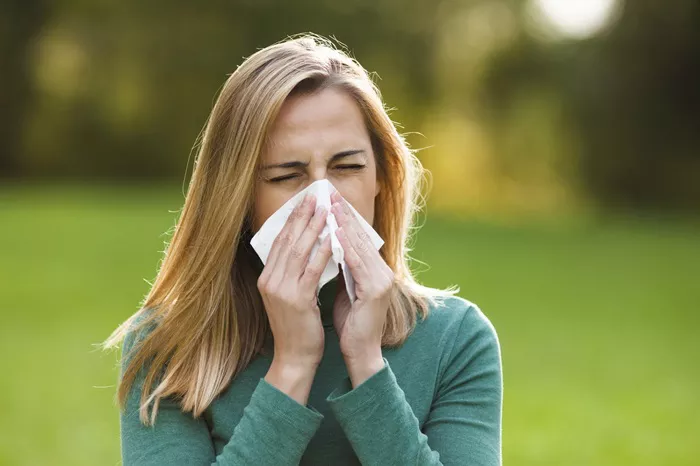Seafood allergies are increasingly recognized as a significant health concern. These allergies can range from mild symptoms to severe anaphylactic reactions, making it crucial to understand why seafood can trigger such adverse responses. This article delves into the reasons behind seafood allergies, exploring the underlying mechanisms, common allergens, and preventive measures.
Seafood Allergies
Seafood allergies affect a growing number of individuals worldwide, posing challenges not only for those who suffer from these allergies but also for healthcare providers and food industry professionals. The diversity of seafood species and the complex nature of allergens involved contribute to the intricacy of managing and diagnosing these allergies.
The Immune System and Allergies
At the core of any allergy, including seafood allergies, lies the immune system. The immune system is designed to protect the body from harmful substances such as pathogens. However, in the case of allergies, the immune system mistakenly identifies a harmless substance as a threat and mounts an inappropriate response.
1. Immune System Response: Allergies involve the production of immunoglobulin E (IgE) antibodies. When an allergen is encountered, these antibodies trigger the release of histamines and other chemicals from mast cells and basophils, leading to allergic symptoms.
2. Role of Histamines: Histamines are chemicals released during an allergic reaction that cause inflammation, itching, and swelling. They play a crucial role in the symptoms experienced during seafood allergies.
Common Seafood Allergens
Seafood can be broadly categorized into two types: fish and shellfish. Both categories contain proteins that are known to trigger allergic reactions. Understanding these allergens is key to managing seafood allergies effectively.
1. Fish Allergens: Fish allergens are primarily proteins found in the muscle tissues of fish. Common fish allergens include parvalbumin, a calcium-binding protein, and other muscle proteins. Parvalbumin is heat-stable and resistant to digestion, making it a potent allergen.
2. Shellfish Allergens: Shellfish are further divided into two categories: crustaceans (such as shrimp, crab, and lobster) and mollusks (such as clams, oysters, and squid). The primary allergens in crustaceans are tropomyosin and other structural proteins, while mollusks contain a variety of proteins that can trigger allergic reactions.
See Also: Why Do I Suddenly Have Skin Allergies?
Genetic and Environmental Factors
Several factors contribute to the development of seafood allergies, including genetic predisposition and environmental influences.
1. Genetic Factors: A family history of allergies can increase the likelihood of developing seafood allergies. Specific genetic markers may predispose individuals to have heightened immune responses to seafood proteins.
2. Environmental Factors: Environmental factors, such as exposure to certain allergens during early childhood or changes in diet, can influence the development of seafood allergies. Additionally, geographical differences in seafood consumption and allergen exposure may play a role in the prevalence of these allergies.
Cross-Reactivity in Seafood Allergies
Cross-reactivity occurs when the immune system mistakes proteins in one substance for those in another, leading to allergic reactions. In seafood allergies, cross-reactivity can be a significant issue.
1. Fish-Shellfish Cross-Reactivity: Some individuals allergic to one type of fish may react to other fish species or even shellfish due to similarities in allergenic proteins. This cross-reactivity complicates dietary management and diagnosis.
2. Tropomyosin Cross-Reactivity: Tropomyosin, a major allergen in crustaceans, can cross-react with similar proteins in other invertebrates, such as insects. This cross-reactivity can lead to unexpected allergic reactions in individuals with shellfish allergies.
Symptoms and Diagnosis of Seafood Allergies
Symptoms of seafood allergies can vary widely, from mild hives to severe anaphylaxis. Proper diagnosis is essential for effective management.
1. Symptoms: Common symptoms include hives, itching, swelling, abdominal pain, vomiting, and difficulty breathing. In severe cases, anaphylaxis can occur, characterized by a rapid onset of symptoms, including a drop in blood pressure, loss of consciousness, and difficulty breathing.
2. Diagnosis: Diagnosis involves a combination of medical history, skin prick tests, and blood tests to detect IgE antibodies specific to seafood proteins. Oral food challenges may also be conducted under medical supervision to confirm the diagnosis.
Management and Prevention
Managing seafood allergies requires careful attention to dietary choices and awareness of potential cross-contamination.
1. Avoidance: The primary strategy for managing seafood allergies is strict avoidance of the offending allergens. This includes reading food labels carefully and inquiring about ingredients when dining out.
2. Emergency Preparedness: Individuals with seafood allergies should carry an epinephrine auto-injector and have an action plan for managing allergic reactions. Education on recognizing early symptoms and using epinephrine correctly is crucial.
3. Allergen-Free Alternatives: For those with seafood allergies, there are various allergen-free alternatives available, such as plant-based seafood substitutes. These can provide a safe and enjoyable dining experience without triggering allergic reactions.
Conclusion
Seafood allergies present significant challenges due to the complex nature of allergens and the need for strict avoidance. Understanding the underlying mechanisms, common allergens, and strategies for management can help individuals with seafood allergies lead a safe and healthy life. Ongoing research and advances in allergy testing and treatment hold promise for improved management and potential future therapies for seafood allergies.
[inline_related_posts title=”You Might Be Interested In” title_align=”left” style=”list” number=”6″ align=”none” ids=”6593,10751,4011″ by=”categories” orderby=”rand” order=”DESC” hide_thumb=”no” thumb_right=”no” views=”no” date=”yes” grid_columns=”2″ post_type=”” tax=””]



































